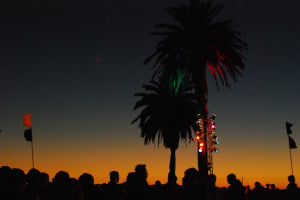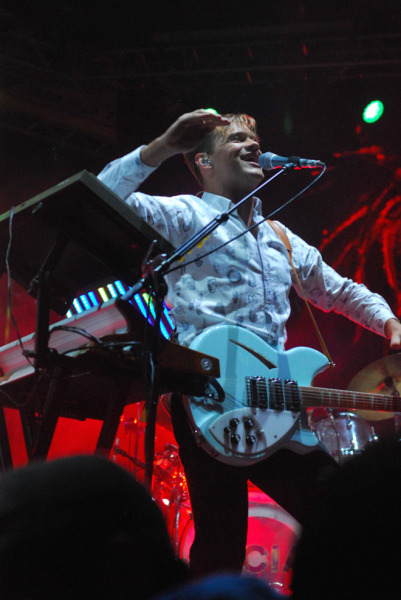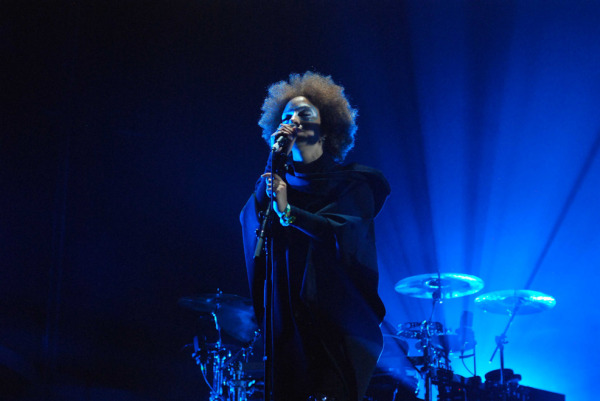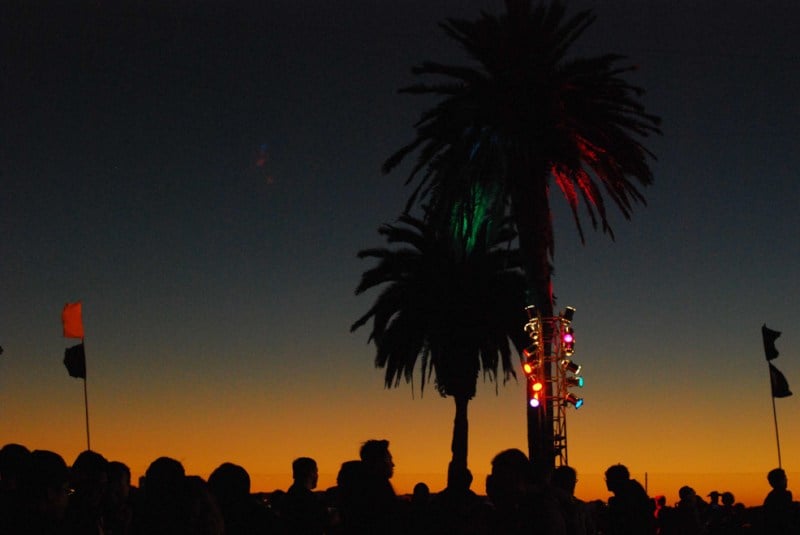
Last weekend, Treasure Island Music Festival took over Treasure Island, in the middle of the San Francisco Bay, for its eighth year running. The festival brought acts – such as Outkast, Massive Attack, alt-J and Janelle Monae – to play against the backdrop of the Bay Bridge, the city skyline and the Golden Gate. Halfway through TV on the Radio’s set, the sun set in deep orange and red hues behind the Golden Gate Bridge, as a sailboat moved across the scene. Audience members had trouble deciding whether to watch the performance on stage or to look at the spectacular show on the horizon.
While other festivals seem to be following the mantra “bigger is better,” Treasure Island has remained relatively small, with just two stages and 26 bands split over two days (in addition to a silent disco with DJ sets). Because only one set occurred at a time, switching between the main stage and the slightly smaller Tunnel Stage, you didn’t feel like you were missing something the whole time you were watching a set or that you had to camp out at a stage just to be able to see the performance. There were plenty of good vantage points to see the stages, dance and hear the music.

With a small curated selection of bands, and fewer huge headliners, the people who shelled out the money for the festival were more likely to be fans of the middle-section of the concert bill. These often turn out to be the best shows because the fans are really there to appreciate the music.
More days, more stages, more celebrities, bigger acts, bigger audiences, bigger brands: These are the metrics by which we seem to be evaluating the success of festivals. As festivals get bigger and become just a place to be seen, the core purpose of the event — music — gets subjugated. Festivals want to grow their customer base, but if this leads to a dilution of music fans, then the ethos of the event will be lost.
The highlight of the festival was definitely St. Lucia, led by songwriter and frontman Jean-Philip Grobler, who lit up the night with their synth-pop, saturated with catchy hooks. This, with Grobler’s soaring, dreamy vocals, transported the crowd to some ‘80s tropical locale. From the keyboardist, to the drummer, and especially Grobler himself, everyone on stage looked genuinely enthused and excited to play to an equally thrilled dancing crowd. It was the kind of set where if you didn’t know their music before, you would definitely be getting on Spotify later that night to check them out.
Janelle Monáe continued the ‘80s revival vibe with her performance, but in more of a Prince way. Electronic DJ Zedd felt out of place at the festival. Zedd’s stage, with not more than his head visible behind a massive DJ set-up, and his involvement in the music (surely not more than pressing play on his tracks) would feel more natural at a crowded Las Vegas night club than at a small festival.
The biggest turnout of the weekend was unsurprisingly for Outkast, whose set felt a lot like a stop on a reunion tour. While Outkast can draw a huge crowd with their most popular hits, a lot of their music is somewhat inaccessible for a casual listener. However, at Treasure Island, the crowd was enjoying them even during their less famous tunes.
At alt-J’s performance the music spoke for itself. The soft-spoken band didn’t need any bells or whistles to excite the eager crowd. Lead singer Joe Newman’s voice is like an instrument, and the instrumentals are like lyrics. Songs like “Breezeblocks” and “Tesselate” vacillated between slow-paced melodies and punchy hooks, which brought a sense of calm excitement to the swaying concertgoers.

Unsurprisingly, the crowd thinned out for Massive Attack. Given that the festival’s audience was primarily Bay Area 20-somethings, and the band’s heyday was in the ‘90s and its music is geared towards an older demographic than teenagers, Massive Attack was not able to keep people out late on a Sunday night. They front-loaded their set with their most popular records “Teardrop,” “Angel” and “Paradise Circus” all coming in the first half of the set. While many bands choose to save at least one of their big hits for the end of their set, Massive Attack made an uncommon decision, which allowed casual fans to hear songs they enjoyed. It also meant that only their most dedicated fans were left to enjoy the final songs together, which felt right.
Contact Gabriela Groth at gngroth ‘at ‘stanford.edu.
Photos from the festival:
[justified_image_grid ids=”1090610,1090578,1090609, 1090586,1090587,1090585, 1090604,1090602, 1090603,1090601, 1090605, 1090606, 1090607,1090584, 1090580, 1090581, 1090582, 1090583, 1090608, 1090577, 1090598, 1090599, 1090574,1090576, 1090579, 1090591,1090593, 1090594,1090611, 1090590, 1090592, 1090571, 1090572, 1090588, 1090589,1090597, 1090596″]
